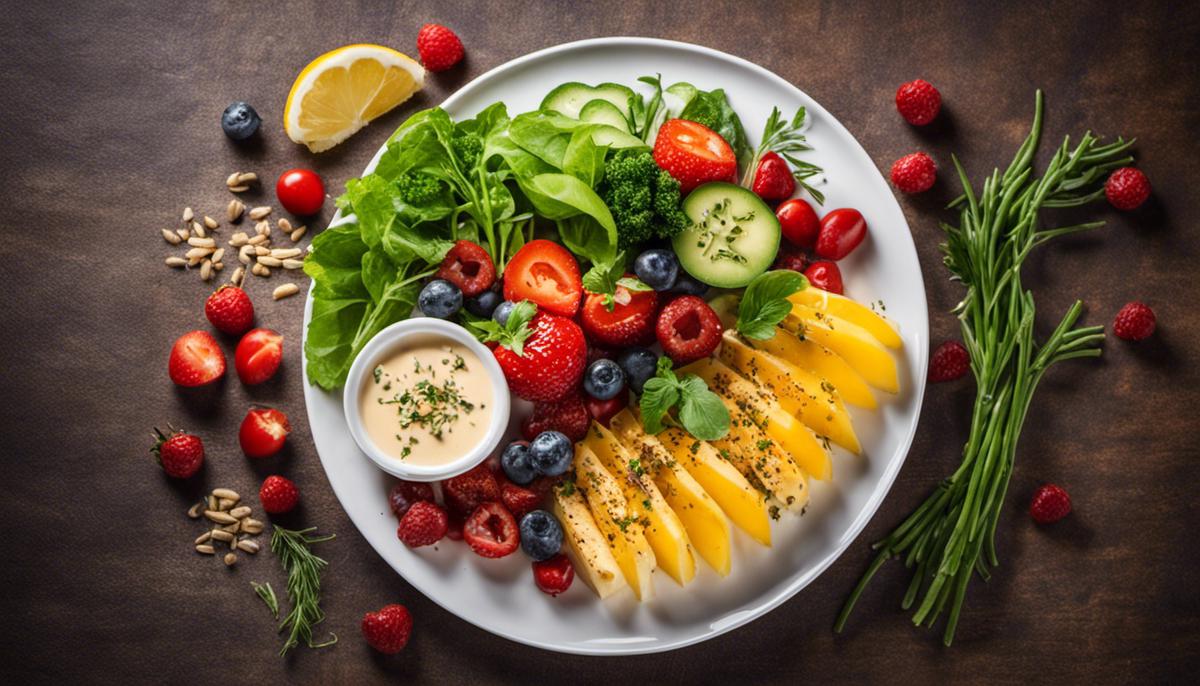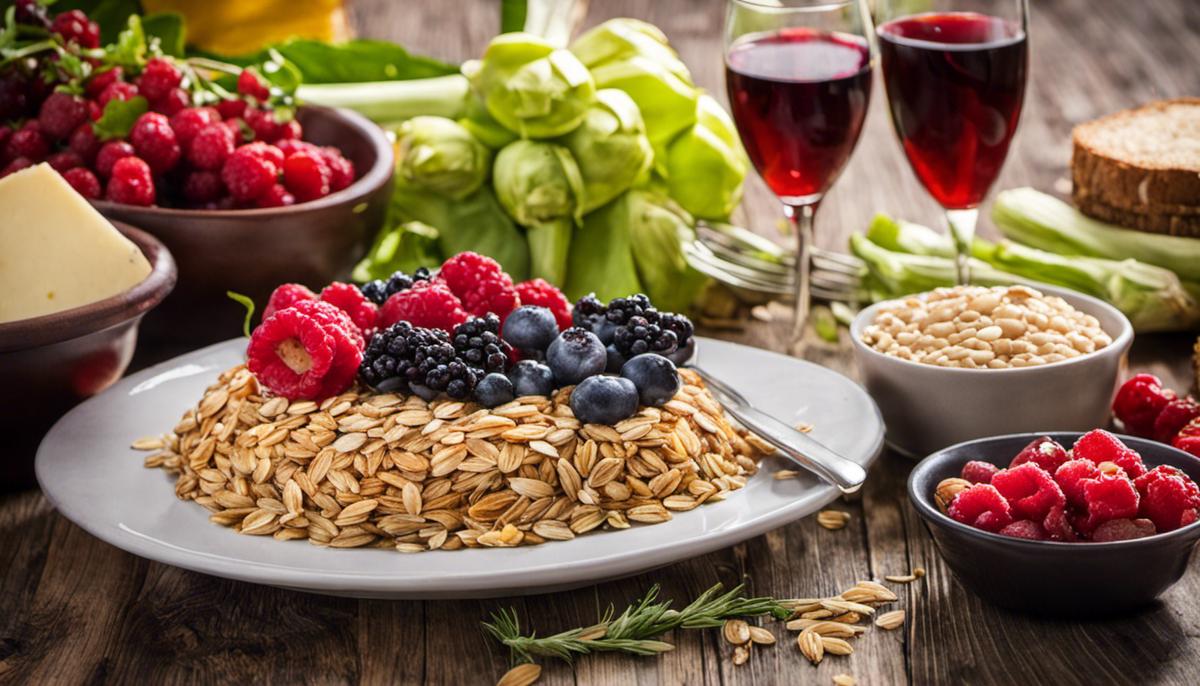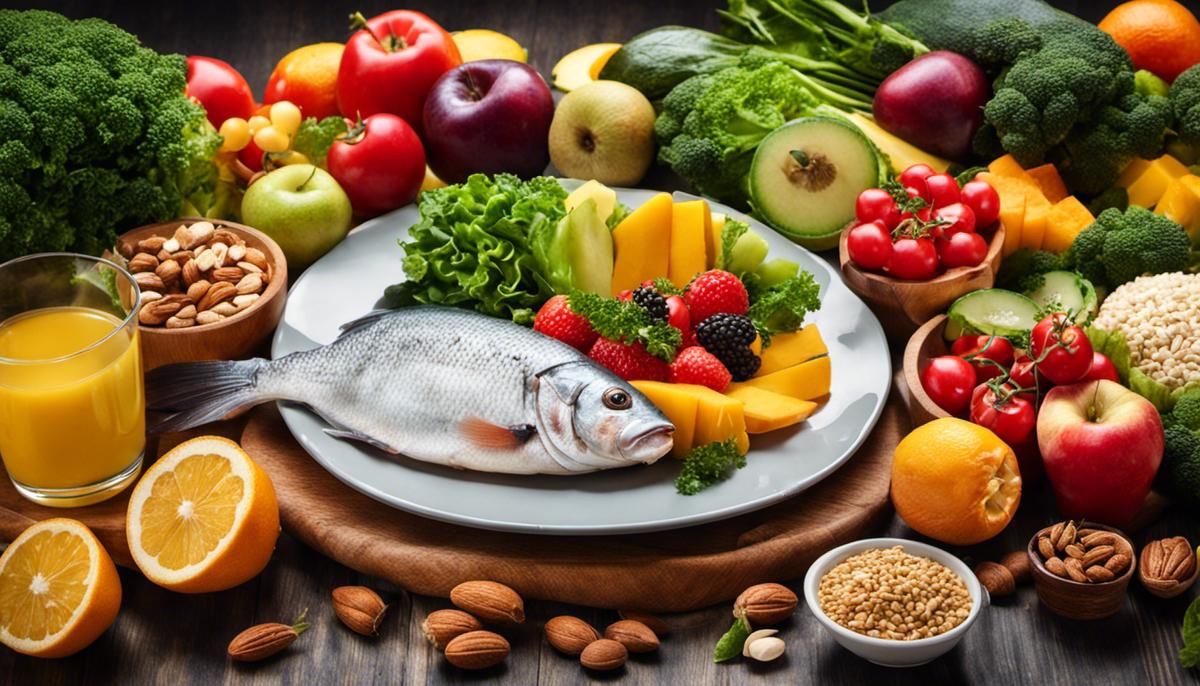The foods we eat serve as much more than just fuel for our bodies, they inform the very nuances of our health, influencing components such as our cholesterol levels. Our relationship with food and the dietary choices we make bear a significant influence on both good and bad cholesterol. Exploring this profound link between our preferred cuisines and their impact on cholesterol levels, provides a key understanding of how we can tailor our diets for optimal health. As we delve into a vast assortment of both delicious and nutritional foods, ranging from whole grains to dark chocolate, the power of cholesterol-lowering foods is unleashed. These aren’t just heart-healthy choices; they’re food options that invite us on a tantalizingly flavorful journey toward better health.
Table of Contents
Understanding the Relationship between Cholesterol & Diet
Passionate individuals with a deep love for the culinary world may sometimes face challenges when balancing their foodie indulgences with health, particularly regarding cholesterol levels. Many of our favorite cuisines and dishes are heavy in saturated fats and trans fats, the main dietary culprits for high cholesterol. But fear not, dear food lovers, one does not have to compromise flavor for health. Indeed, the food we passionately savor can intelligently influence and manage our cholesterol levels.
Raised cholesterol levels aren’t something to take lightly. This silent condition, with no apparent symptoms, can lead to heart disease, the leading cause of death worldwide. By manipulating ingredients, cooking methods, and portion sizes, we can keep our cholesterol levels in check without sacrificing our foodie experiences.
Let’s begin with fats – the cornerstone of many culinary delights. While saturated and trans fats are notorious for raising LDL or “bad” cholesterol levels, monounsaturated and polyunsaturated fats work exactly the opposite. They can lower LDL cholesterol and raise HDL or “good” cholesterol. Foods like avocados, nuts, olive oil, and oily fish are excellent sources of these beneficial fats. Your favorite avocado toast just got even better!
Spicing up your dishes can also help, as many herbs and spices are known for their cholesterol-lowering properties. Garlic, turmeric, cinnamon, and others not only add depth to your culinary creations but also have powerful antioxidant benefits.
It’s also essential to remember that, more than individual foods, what matters is the overall quality of your diet. Lean proteins, whole grains, fresh fruits, and vegetables should play starring roles in your foodie repertoire.
Creativity and innovation in the kitchen also come to the rescue. Home cooking is an under-recognized hero in the foodie world, offering control over ingredients and portion sizes. Think swapping deep frying for roasting, grilling, or steaming. Consider exchanging cream and butter with nutritious alternatives like Greek yogurt or avocado.
Eating out doesn’t need to be a cholesterol-raising occasion either. Opt for restaurants that have diverse menus, allowing room for healthier choices. Don’t be afraid to request modifications like dressing on the side, smaller portions or substituting ingredients.
Consider foods high in soluble fiber. They can reduce the absorption of cholesterol into your bloodstream. Moreover, they provide a feeling of fullness that helps in controlling portion size and subsequently, calorie intake. Foods high in soluble fiber include oats, lentils, fruits, and vegetables.
Remember, no cuisine is off-limits. The wide world of food is filled with more than just dairy-heavy, grease-laden decadence. A vast array of world cuisines focus heavily on lean protein, whole grains, and fresh produce, showcasing them in delicious, cholesterol-friendly ways.
Cholesterol may be a villain, but it’s one that can be largely tamed with smart, savor-filled strategies. Food, in essence, is a form of love, an expression of care. In this care for ourselves and others, there’s room to care for our heart and health. So, here’s to finding the perfect balance between our foodie passions and heart-healthy choices — a pursuit just as fun and flavorful as the hunt for the next great bite!

Unleashing the Power of Cholesterol-Lowering Foods
Bold Adventures in Cholesterol-Conscious Cuisine
For those in love with bold flavors and clever culinary techniques, a diet rich in foods to lower cholesterol need shift the focus from indulgence to innovations. The palate-parade of cholesterol taming foods goes beyond the realm of olive oil, avocados, and grilled fish. It opens up the stage for a gourmet world where every bite is an exciting blend of wellness and whimsy.
Embark on a mouth-watering journey to explore some lesser-known – yet equally gratifying – foods known for their cholesterol-fighting powers, and find out how they can be artfully integrated into a food aficionado’s diet.
Here’s to oatmeal, but not the type that conjures up images of a bland, lackluster breakfast. It’s about savoring steel-cut oats graced with a swirl of almond butter, a sprinkle of antioxidant-rich cinnamon, and a generous dollop of mixed berries. Bursting with soluble fiber, oats are a noteworthy cholesterol interceptor. Top that with nutrient-packed berries, spices, and nuts, and you’ve got a heart-healthy masterpiece right in your bowl!
Protein, meet pulses. Lentils, beans, chickpeas, and peas are stellar examples of nutrient powerhouses. Not only are they rich in fiber, but they also host an array of antioxidants and a bevy of proteins – an ideal combination to keep cholesterol at bay. Jazz up a lentil curry with aromatic spices or toss chickpeas into a salad for a nutritious crunch. Unleash your culinary creativity, only to find that these humble legumes can effortlessly become the star of your table.
Ever thought that the bitter, knobbly artichoke could be your cholesterol’s nemesis? This thorny vegetable is a treasure-trove of fiber and antioxidants, particularly cynarin, known to increase bile production and reduce cholesterol levels. Roast them to perfection, slice them onto a whole-grain pizza, or puree them into a savory dip. Despite their menacing look, artichokes can mellifluously merge with other ingredients to deliver a multitude of delicious dishes.
Why stop at garlic when there’s a whole world of allium vegetables to explore? Onions, leeks, chives, shallots, and scallions share the same sulfur compounds that give garlic its cholesterol-lowering magic. Try caramelizing onions to enhance the natural sweetness or throw a handful of chives into a vegetable stir-fry to lend a delicate oniony flavor. For those dining out, Asian cuisine offers a wide range of dishes featuring allium vegetables – just another delectable way to keep those cholesterol levels in check.
Red wine is renowned for its role in cardiovascular health; thanks to the high level of antioxidants, particularly reservatrol. The sobering news, however, is moderation, with sips – not guzzles – of this liquid ruby being the mantra. Pair a modest glass of red with a plate of grilled vegetables or a chunk of dark chocolate, yet another delightful antioxidant, for an indulgent cholesterol-friendly evening.
Leaning into a lifestyle of heart-healthy decadence isn’t about giving up the joy of culinary discovery – it’s about adopting a creative, open-minded approach to not just what we eat but how we eat. With food being a universal symbol of love, health, and happiness, it’s indeed possible to keep the flavors high and the cholesterol levels low! Cheers to that!

Fitful Culinary Techniques & Recipes
Transforming Cholesterol-Lowering Foods into Culinary Masterpieces: A Foodie’s Guide to Healthy Indulgences
In the quest for a heart-healthy lifestyle that dances on the tongue and warms the heart, several key foods can serve as culinary partners. The wonder of these ingredients is that they not only offer their own unique flavors, but they also serve as versatile canvases for gastronomic creativity. Let’s unravel the charm of these superfoods and the innovative ways to incorporate them into our daily meals.
Oatmeal has long been touted as a heart-health warrior, shielding against high cholesterol. Its secret weapon is its rich soluble fiber content, which creates a gel-like substance to trap cholesterol and banish it from the body. But saying ‘oatmeal’ need not be synonymous with ‘boring’. Infusion of flavors like fresh fruits, cinnamon, or a pinch of pure cocoa transform this humble grain into a breakfast hero. Cool overnight oats in summer or warm baked oatmeal in winter, the possibilities are exciting and endless.
Lentils, beans, chickpeas, and peas are members of the pulse family, a group revered for their cardiovascular benefits. These hearty foods pack a punch of not just soluble fiber, but also protein, both major players in cholesterol management. Imagine a creamy lentil soup garnished with herbs on a chilly evening or a crispy falafel with fresh tangy salsa as a pick-me-up snack. By incorporating these foods, one can drastically improve overall heart health without feeling deprived.
Artichokes, with their subtly sweet profile, have long been loved by gourmets. Yet, these seemingly exotic veggies are brimming with heart-friendly nutrients. Incorporating artichokes into salads, pastas, or even as an addition to homemade pizzas can elevate flavors while reducing cholesterol numbers.
Ah, allium vegetables! The flavorful family of onions, leeks, shallots, and garlic help, yes you guessed it, lower cholesterol levels. Just imagine a succulent steak or a juicy grilled mushroom topped with sautéed onions and garlic. These vegetables provide an easy yet impactful way to infuse food with heart-healthy benefits.
We also can’t forget the allure of red wine, lauded for its heart-healthy status. Drizzled over fresh berries or used in marinades, red wine can impart depth to a recipe while promoting cardiovascular health – all in moderation, of course.
Stepping onto this heart-friendly culinary path doesn’t call for compromising on the love for rich flavors or the joy of exploring unique foods. Instead, it encourages a burst of creativity in the kitchen. So, go on, arm yourselves with garlic and onions, simmer with red wine, slide artichokes into those pizzas, and enjoy the vibrant journey to heart health through tantalizing food. Remember, it’s not just about lowering cholesterol, but about creating a dance of flavors at your table, a melody of textures on your plate, and an orchestra of health in your body.

Navigating the world of cholesterol-friendly foods doesn’t mean sacrificing the pleasure of devouring delicious meals. A variety of delectable recipes and innovative cooking techniques await discovery, each promising to preserve the nutritional integrity and cholesterol-lowering benefits of the ingredients used. High cholesterol can indeed be tackled through informed dietary choices, turning your kitchen into a powerhouse of nourishing, cholesterol-conscious meals. As we continue to marvel at the staggering range of delicious cholesterol-lowering foods, we unlock the potential to align our gastronomical passion with the pursuit of health. So, let’s raise our forks and cheer to a food-filled pathway leading to healthier cholesterol levels and a hearty life!

Rajan Moonbeam is a dedicated health writer with a Master of Public Health (MPH) degree. Specializing in holistic wellness and preventive care, Rajan combines scientific research with natural approaches to health, offering readers practical advice on living their healthiest life. His work is a beacon for those seeking to navigate the path to well-being with integrity and balance.

